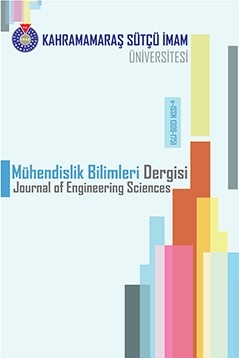Effects of Processing Methods, DOP Amount and Filler Content on the Mechanical Properties of Recycled Polyvinyl Chloride (PVC) Composites
Effects of Processing Methods, DOP Amount and Filler Content on the Mechanical Properties of Recycled Polyvinyl Chloride (PVC) Composites
Recycled PVC, Wood Flour, Injection Molding, Compression Molding,
___
- Alp, S., 2003. İstanbul Ticaret Odası Plastik Sektör Raporu
- ASTM (2000). “D 256: Standard Test Methods for Impact Resistance of Plastics and Electrical Insulating Materials” Philadelphia
- ASTM (2001). “D 638: Standard Test Methods for Tensile Properties of Plastics” Philadelphia
- ASTM (2001). “D 6662: Standard Specification for Polyolefin-Based Plastic Lumber” Philadelphia
- ASTM (2003). “D 790: Standard Test Methods for Flexural Properties of Unreinforced and reinforced Plastics and Electrical Insulating Materials” Philadelphia
- Belmares, M., (2004) “Hildebrand and Hansen Solubility Parameters from Molecular Dynamics with Applications to Electronic Nose Polymer Sensors”, Journal of Computing Chemistry, 25 1814–1826.
- Kıralp, S., Özkoç G., Erdoğan, S., Çamurlu, P., Doğan, M., Baydemir, T., 2007. Modern Çağın Malzemesi Plastikler, ODTÜ Bilim ve Toplum Kitapları Dizisi ODTÜ Yayıncılık
- X Colom, J Can˜avate, F Carrillo and MJ Lis., (2014) ʺ Acoustic and mechanical properties of recycled polyvinyl chloride/ground tyre rubber compositesʺ, Journal of Composite Materials, Vol. 48(9) 1061–1069
- Mengeloglu, F., Karakus, K., (2008) ʺ Polymer-Composites from Recycled High Density Polyethylene and Waste Lignocellulosic Materialsʺ, Fresenius Environmental Bulletin, Vol.17-No 2.
- Fukushima, m., Wu, B., Ibe,H., Wakai, K., Sugiyama, E., Abe, H., Kitagawa, K., Tsuruga, S., Shimura, K., Ono, E., (2010) ʺ Study on dechlorination technology for municipal waste plastics containing polyvinyl chloride and polyethylene terephthalateʺ, J Mater Cycles Waste Manag, 12:108–122
- Başlangıç: 1998
- Yayıncı: Kahramanmaraş Sütçü İmam Üniversitesi
Kan ve Organ Bağışı Mobil Yönetim Sistemi
Hussein SALEEM, İbrahim Taner OKUMUŞ
Mohammed QOJA, İbrahim Taner OKUMUŞ
G-Metrik Uzayda Zayıf Uyumlu Dönüşümler İçin Bazı Sabit Nokta Teoremleri
Cafer AYDIN, Seher Sultan SEPET
Screw and Nail-Holding Capacities of Combi Plywood Produced From Eucalyptus, Beech and Poplar Veneer
Bekir BAL, Hasan ORHAN, Tuncay BOSTAN
Model Verification For A Brushed DC Motor Running In Closed Loop With Speed Feedback
Metin SALİHMUHSİN, İbrahim ORÇAN
Yerel Elektrik Santrallerin Dağıtım Şebekelerinin Kararlılığına Etkisinin İncelenmesi
Zeynel BAŞ, Ayşe İNCESU, Ahmet Serdar YILMAZ
Ali ÖTER, Osman AYDOĞAN, Deniz TUNCEL
Anaerobik Membran Biyoreaktörde TMP-Akı Değerlendirmesi
Serdar GÖÇER, Dilek AKMAN, Kevser CIRIK
Guleman Ofiyoliti (Elazığ)’nin Jeokimyasal Özellikleri ve Tektonik Ortamı
Gülşah ÖZEK, Muharrem AKGÜL, Nusret NURLU, Nil YAPICI
Utilization of Recycled PET Flours in Recycled Polyvinyl Chloride (PVC) Composites
İlkay ATAR, Kadir KARAKUŞ, İbrahim Halil BAŞBOĞA, Fatma BOZKURT, Fatih MENGELOĞLU
